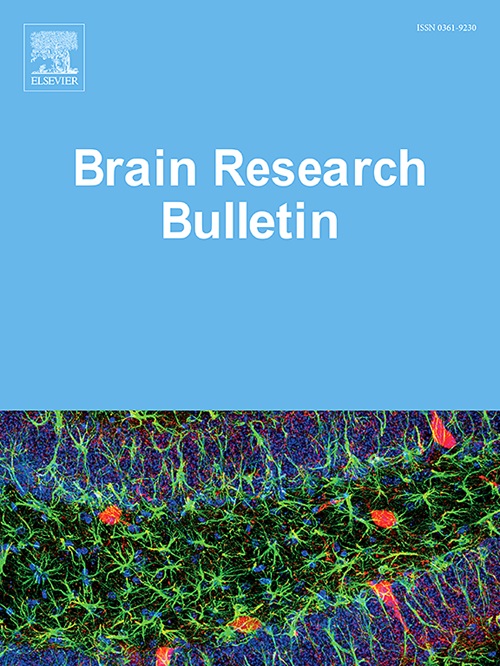Single high-frequency repetitive transcranial magnetic stimulation and intermittent theta pulse stimulation promote working memory behavior in participants: An event-related potential study
IF 3.5
3区 医学
Q2 NEUROSCIENCES
引用次数: 0
Abstract
Objective
Repetitive transcranial magnetic stimulation (rTMS) to the left dorsolateral prefrontal cortex (L-DLPFC) has an improving effect in cognitive function, but it is still not clear in what specific cognitive domains. We here combined a single session of TMS (HF-rTMS/iTBS) with electroencephalography (EEG) to clarify the effects of magnetic stimulation techniques on executive function, working memory, and visuospatial attention in healthy participants, and to investigate the underlying neurophysiological mechanisms.
Methods
Fifty-one healthy participants were randomly assigned to three stimulation groups (HF-rTMS, iTBS, and sham groups). Classical psychological paradigms (task-switching, 2-back with visual Oddball) and event-related potentials (ERPs) were performed to compare the behavioral indices of each paradigm before and after the two stimulations, as well as the changes in the ERP components.
Results
Analysis of behavioral indicators showed that reaction times in the 2-back paradigm were faster after HF-rTMS and iTBS than after sham stimulation. However, no statistically significant differences were observed in the behavioral changes in the task-switching and visual Oddball paradigms. ERP analysis showed that N2 amplitude in the frontal and central regions of the participants increased during the 2-back paradigm following HF-rTMS and iTBS; however, no statistically significant differences were observed between the ERP components of the task-switching and visual Oddball paradigms.
Conclusion
Single sessions of HF-rTMS and iTBS on the L-DLPFC specifically enhanced working memory performance, with no significant effects on executive function and visuospatial attention. Both true stimulations elicited more negative N2 in the frontal and central channels during the 2-back paradigm, suggesting increased recruitment of cognitive resources from these brain areas. Although iTBS and HF-rTMS improved working memory behavior, iTBS’s shorter stimulation time suggests it may have greater potential for clinical applications in terms of time-benefit costs.
单高频重复经颅磁刺激和间歇Theta脉冲刺激促进被试工作记忆行为:事件相关电位研究。
目的:重复经颅磁刺激(rTMS)对左背外侧前额叶皮层(L-DLPFC)有改善认知功能的作用,但具体在哪些认知领域尚不清楚。本研究将单次经颅磁刺激与脑电图(EEG)相结合,以阐明磁刺激技术对健康受试者执行功能、工作记忆和视觉空间注意力的影响,并探讨其潜在的神经生理机制。方法:51名健康受试者随机分为三个刺激组(HF-rTMS组、iTBS组和假手术组)。采用经典心理模式(任务切换、2-back with visual odd)和事件相关电位(event- correlation potential, ERP)比较两种刺激前后各范式的行为指标以及ERP成分的变化。结果:行为指标分析显示,两背模式下,高频刺激和iTBS后的反应时间明显快于假刺激后的反应时间。然而,在任务转换范式和视觉古怪范式的行为变化中,没有观察到统计学上的显著差异。ERP分析表明,在高频- rtms和iTBS的2-back模式下,参与者额叶和中央区域的N2振幅增加;然而,任务转换和视觉奇球范式的ERP成分之间没有统计学上的显著差异。结论:单次高频- rtms和iTBS对L-DLPFC的工作记忆性能有显著提高,对执行功能和视觉空间注意无显著影响。在双背模式下,两种真实的刺激都在额叶和中央通道中引发了更多的负N2,表明这些大脑区域增加了认知资源的招募。虽然iTBS和HF-rTMS可以改善工作记忆行为,但iTBS较短的刺激时间表明其在时间效益成本方面具有更大的临床应用潜力。
本文章由计算机程序翻译,如有差异,请以英文原文为准。
求助全文
约1分钟内获得全文
求助全文
来源期刊

Brain Research Bulletin
医学-神经科学
CiteScore
6.90
自引率
2.60%
发文量
253
审稿时长
67 days
期刊介绍:
The Brain Research Bulletin (BRB) aims to publish novel work that advances our knowledge of molecular and cellular mechanisms that underlie neural network properties associated with behavior, cognition and other brain functions during neurodevelopment and in the adult. Although clinical research is out of the Journal''s scope, the BRB also aims to publish translation research that provides insight into biological mechanisms and processes associated with neurodegeneration mechanisms, neurological diseases and neuropsychiatric disorders. The Journal is especially interested in research using novel methodologies, such as optogenetics, multielectrode array recordings and life imaging in wild-type and genetically-modified animal models, with the goal to advance our understanding of how neurons, glia and networks function in vivo.
 求助内容:
求助内容: 应助结果提醒方式:
应助结果提醒方式:


